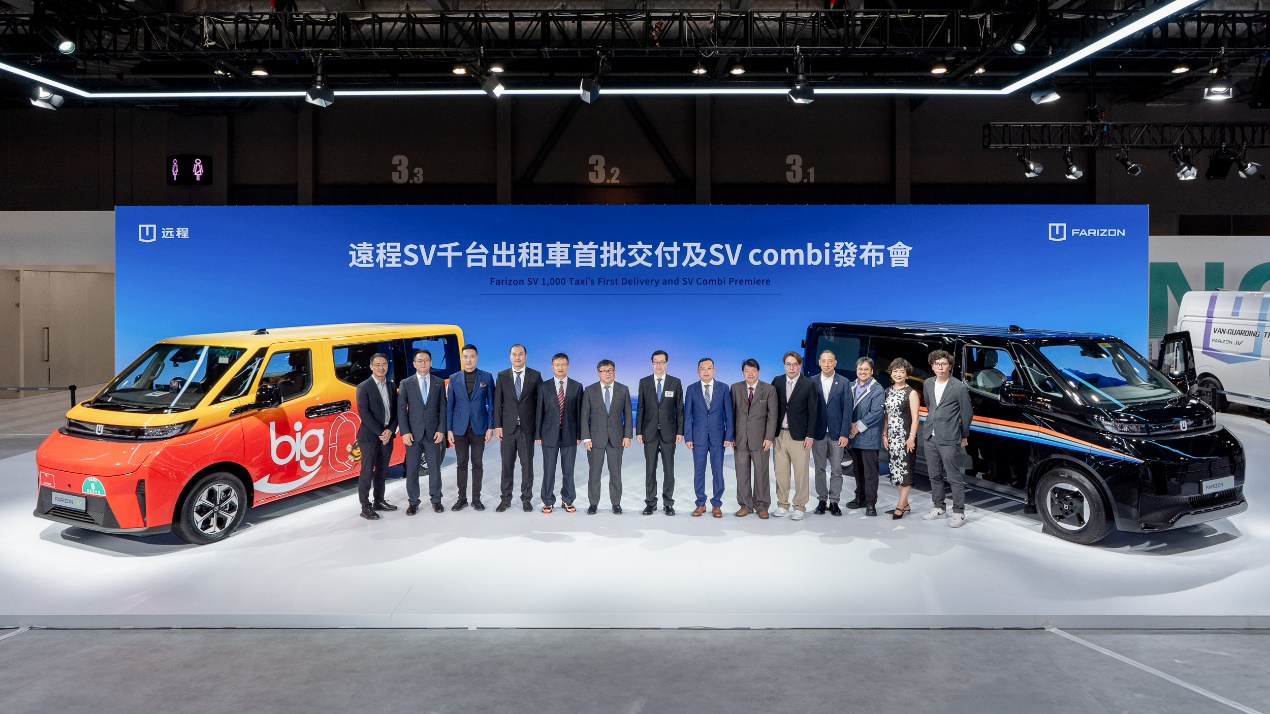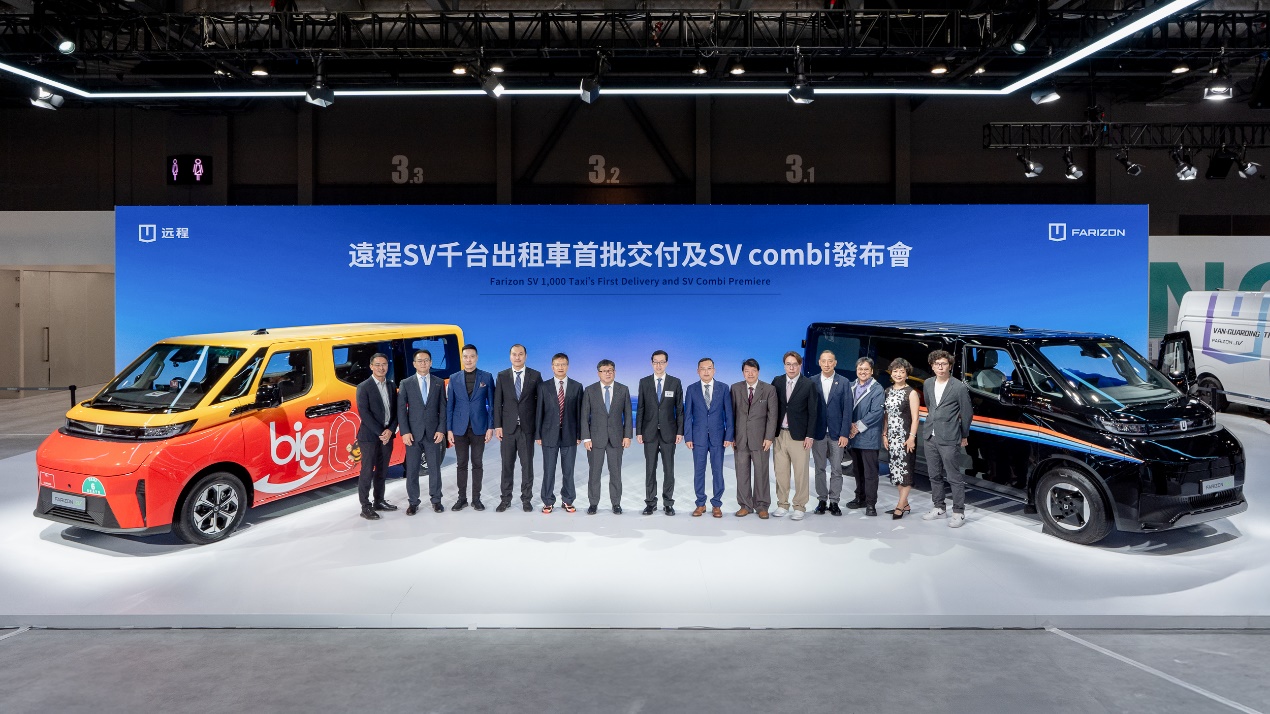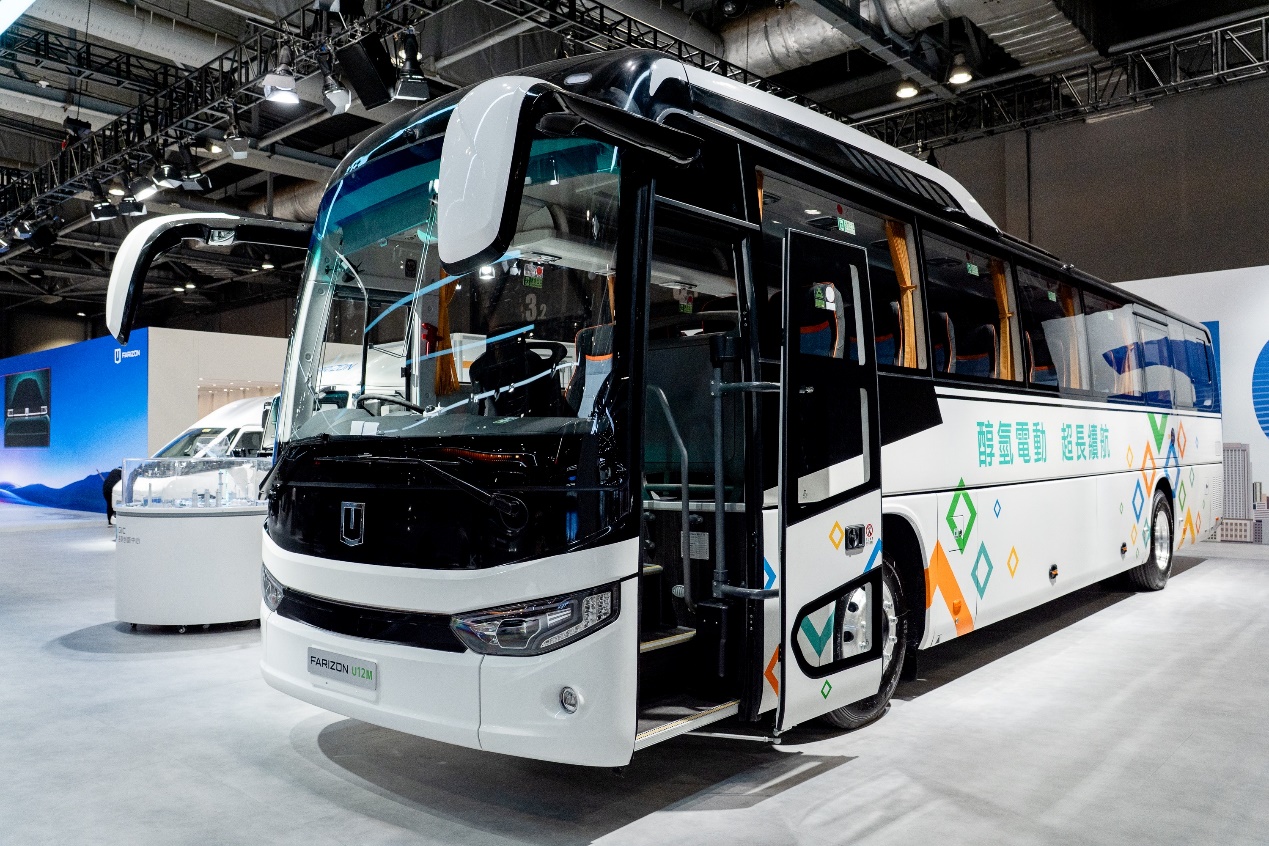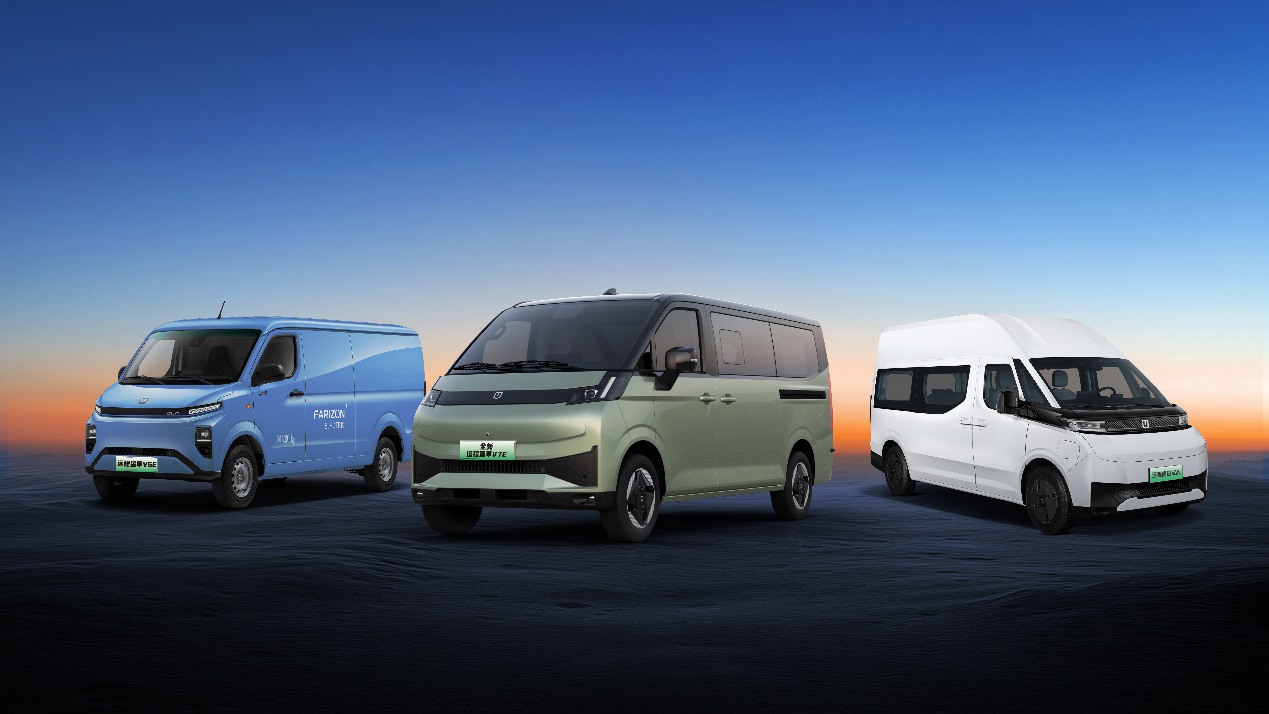
On June 12, in the morning light of Hong Kong Island, the dome of the Hong Kong AsiaWorld-Expo shone with metallic luster, and the giant banner of the 2025 International Automotive and Supply Chain Expo fluttered in the sea breeze. This grand event with the theme of "New Cars, New Journey" not only carried the ambition of China's auto industry to show its muscle to the world, but also witnessed the historic moment when Yuancheng New Energy Commercial Vehicles used Hong Kong as a strategic fulcrum to leverage the transformation of the global commercial vehicle energy landscape.
The twilight and rebirth of the century-old red taxi
When it comes to Hong Kong, the red taxis on the streets must be a vivid symbol that carries the collective memory of the city. And now, they are standing at the crossroads of history. Since the first taxi honked on the streets of Hong Kong Island in 1921, after a hundred years of vicissitudes, Toyota Crown Comfort has dominated the market with absolute advantage for thirty years. These old cars, which have been in service for more than 20 years, with a combination of mechanical dashboards and manual transmissions, seem somewhat out of place in the era of intelligent networking. What's more serious is that the average annual carbon dioxide equivalent emissions of each fuel taxi are eroding the foundation of Hong Kong's "2050 Carbon Neutrality" goal.
Data from the Hong Kong Transport Department shows that among the current 18,163 registered taxis, 98% are fuel-powered vehicles. This figure is far from the 2050 zero-emission target required by the "Public Bus and Taxis Green Transformation Roadmap".
In the private car sector, although the number of electric vehicles in Hong Kong has increased by about 7 times compared with 5 years ago, exceeding 100,000, the lagging charging infrastructure has become the biggest constraint. The ratio of public charging piles to electric vehicles in Hong Kong is only 1:10. Old residential areas lack reserved charging spaces. The unbalanced distribution of charging piles has led to the dilemma of "easy to leave home, difficult to return home", making the transition to new energy difficult.

The debut of the long-distance super van brings hope for a breakthrough in this transformation dilemma. At the delivery ceremony of 1,000 orders held on the first day of the auto show, the first batch of vehicles received by ST Development (International) Co., Ltd. will carry the century-old changes in the Hong Kong taxi industry through the "Bumblebee Fleet". This top-selling model in the mainland new energy light passenger car market will effectively reduce the operating costs of the Hong Kong taxi fleet and accelerate the reduction of carbon emissions in Hong Kong's transportation sector.
Alcohol-hydrogen revolution : solving Hong Kong's energy dilemma
In the center of Geely Holding's booth at the Hong Kong Auto Show, a dynamic demonstration of the methanol circular economy sandbox attracted global attention. This miniature ecosystem consisting of carbon dioxide capture, methanol preparation and filling, and vehicle application is interpreting the underlying logic of the energy revolution. While most global automakers are wavering between pure electric and hydrogen energy routes, Yuanyuan's unique methanol-hydrogen ecosystem demonstrates a unique strategic focus.
Hong Kong's unique geographical environment makes the advantages of the alcohol-hydrogen route more prominent. In this subtropical city with an average annual temperature of 23°C, the energy consumption of air conditioning in summer can reduce the range of pure electric buses. The Yuancheng Interstellar U12M, with a 400L methanol tank, can achieve an ultra-long range of 700 kilometers when fully charged. The motor direct drive system shows a peak torque of 2800Nm, and the climbing ability is greatly improved. More importantly, the methanol refueling time is comparable to the energy refueling efficiency of fuel vehicles, breaking the energy refueling efficiency anxiety of the pure electric route.

In terms of economy, in the long-distance alcohol-hydrogen electric system installed in batches, each liter of methanol can generate more than 2 kWh of electricity, which is equivalent to an electricity price of less than 1 yuan/kWh, reducing costs by 32%-52% compared with fuel vehicles. Compared with National VI diesel vehicles, PM pollutants are reduced by 98%, carbon monoxide by 88%, and nitrogen oxides by 82%.
In non-road application scenarios, the alcohol-hydrogen route shows greater potential. Just a few days ago, Yuancheng launched the world's first alcohol-hydrogen electric mobile charging solution. Through efficient and green methanol power generation, it can provide uninterrupted power supply for more than 24 hours and support the charging of 4 electric vehicles at the same time. In Hong Kong, where every inch of land is valuable, this solution is not picky about the site and does not rely on the power grid. It is expected to solve the core problem of Hong Kong's current charging inconvenience. As an international shipping center, Hong Kong is also actively promoting the use of methanol-powered ships based on the common knowledge that green methanol has become the key to achieving "decarbonization" in the shipping industry. Yuancheng has created the world's first alcohol-hydrogen electric ship solution, and obtained China's first M100 methanol single-fuel marine engine type approval certificate issued by China Classification Society, which will also contribute to the development of green shipping in Hong Kong.
China 's VAN Matrix's Global Breakout
At the Geely Holding booth, the global debut of Yuancheng Xingxiang V7E attracted industry attention. This pure electric van, which is positioned in the 7-8 square meter market, has the longest cargo compartment in its class at 2870mm and a large battery of 51 degrees, filling the market gap between Xingxiang V6E and Super Van.
Looking back at the development history of China's VAN models, from relying on the joint venture model in the era of fuel vehicles to achieving positive research and development in the new energy era, this road to counterattack is full of hardships. The Xingxiang V6E, which was launched in 2022, has set a record of long-term monthly sales champion in the domestic market with its true 6-cubic-meter cargo compartment and 330km range, and has even been exported to overseas markets with developed automobile industries, realizing the technology output of China's new energy VAN.

Public data shows that after more than a year on the market, Super VAN has won the monthly sales championship of new energy light passenger vehicles for 8 consecutive months and the monthly sales championship in the new energy wide-body light passenger vehicle segment for 12 consecutive years. The launch of Xingxiang V7E marks the completion of the last piece of the 6-13.2 cubic meter VAN matrix by Yuancheng. The creation of Yuancheng's Chinese VAN champion family is also the inevitable result of Yuancheng's long-term adherence to positive research and development, user thinking and scenario-based car manufacturing.
Hong Kong Model: A Testing Ground for Globalization Strategy
Standing in the center of the stage at the Hong Kong Auto Show, Remote's layout is far more than product sales. The importance and particularity of the Hong Kong market have accelerated Remote's construction of the "technology-standard-ecology" trinity of overseas capabilities. Taking Remote Super VAN as an example, in order to adapt to Hong Kong's right-hand drive habits, engineers must conduct targeted research and development and repeated testing of right-hand drive products. This process simultaneously meets the requirements of international regulations. When products that have been verified in the Hong Kong market enter Europe, America and other places, their technical maturity and regulatory adaptability will far exceed those of directly exported models, forming a unique competitive advantage. At the same time, the most important thing is to also be committed to exporting the ecological synergy of the entire new energy industry chain. Especially in the context of the new energy era, the vital new model of "ecological overseas expansion" can avoid the "water and soil incompatibility" problem that occurred after the first batch of Chinese new energy vehicles entered Hong Kong.
While the global industry is still wavering between the battery route and the hydrogen energy route, China has spent 20 years to build a barrier for the entire industry chain in the methanol field, from preparation to refueling to vehicle application. Hong Kong, a city that has witnessed the "going out" of China's automobile industry, is using its institutional openness to help China's new energy commercial vehicles complete a historical leap from product output to standard setting to ecological empowerment. On this road to globalization, Hong Kong is not only a test field, but also a "super value-added person" for Chinese manufacturing to go global.